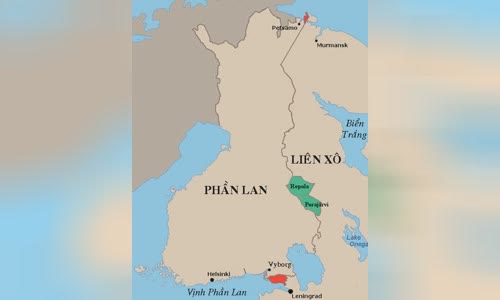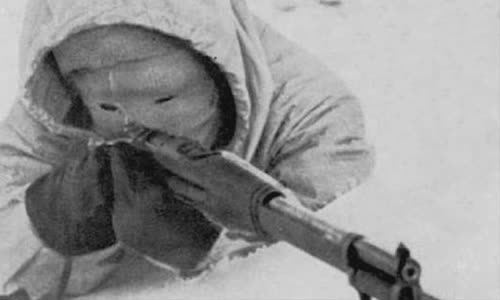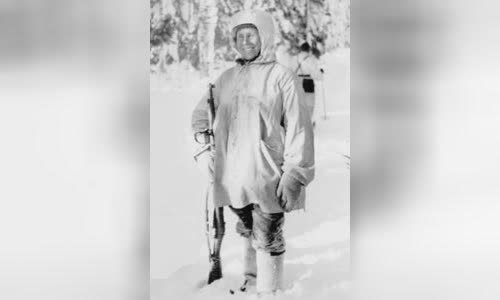Simo Hayha inflicted great damage on Soviet soldiers with just a rifle without a viewfinder, earning the Finnish sniper the nickname "White Death".
In 1939, the Soviet leader Stalin wanted to exchange the two regions of Repola and Porajärvi on the western border for the Vyborg area of Finland to serve as a security buffer for Leningrad, since the city was then only 20 km from the border.

Finland - Soviet border in October 1939 Photo: Wikimedia Commons
Finland, which had close ties to the German empire during World War I, refused to accept this proposal, causing the Winter War between the two countries to erupt in November 1939.
The Soviet Union expected a quick victory, possessing superior military strength, with a force of about 750,000 soldiers, nearly 6,000 tanks and more than 3,000 aircraft.
Finland - Soviet border in October 1939
However, Finland had very few major roads and only one railway, which limited the logistics and operational strategy of the Soviet army.
The Finnish army also prepared a thorough defense, mainly based on the advantage of undulating semi-plains, and arranged bunkers, barbed wire and a defensive belt along the Soviet route.

Finnish sniper Simo Hayha Photo: Finnish Military Archives.
Hayha completed his military service at the age of 20, then returned to a quiet life with farming, skiing and hunting.
After the war with the Soviet Union broke out, as a veteran, Hayha was called to re-enlist and join the Finnish sniper unit.
Hayha is armed with a Sako M28-30, with incredible accuracy within a range of 2,000 m and has a slight recoil.
Hayha is said to prefer working alone, often quietly entering the forest to find a position with good visibility and wait for enemy forces.
With these tactics, Hayha defeated 500-542 Soviet soldiers, a record number in about 100 days for a sniper, even when lighting conditions are limited.

Simo Hayha with a newly designed sniper gun, a gift from the Finnish government Photo: Wikimedia Commons.
Hayha also became more and more popular in the Finnish army and is known as the "ghost" moving through the layers of snow.
However, on March 6, 1940, Hayha was shot in the jaw, nearly half of his face lost and in a coma for 11 days.
On March 12, 1940, the Finnish government announced its acceptance of the initial conditions of the Soviet Union and agreed to execute the ceasefire.
It took Hayha a few years to recover completely and was promoted from corporal to lieutenant.



 Connie Pereira
Connie Pereira







